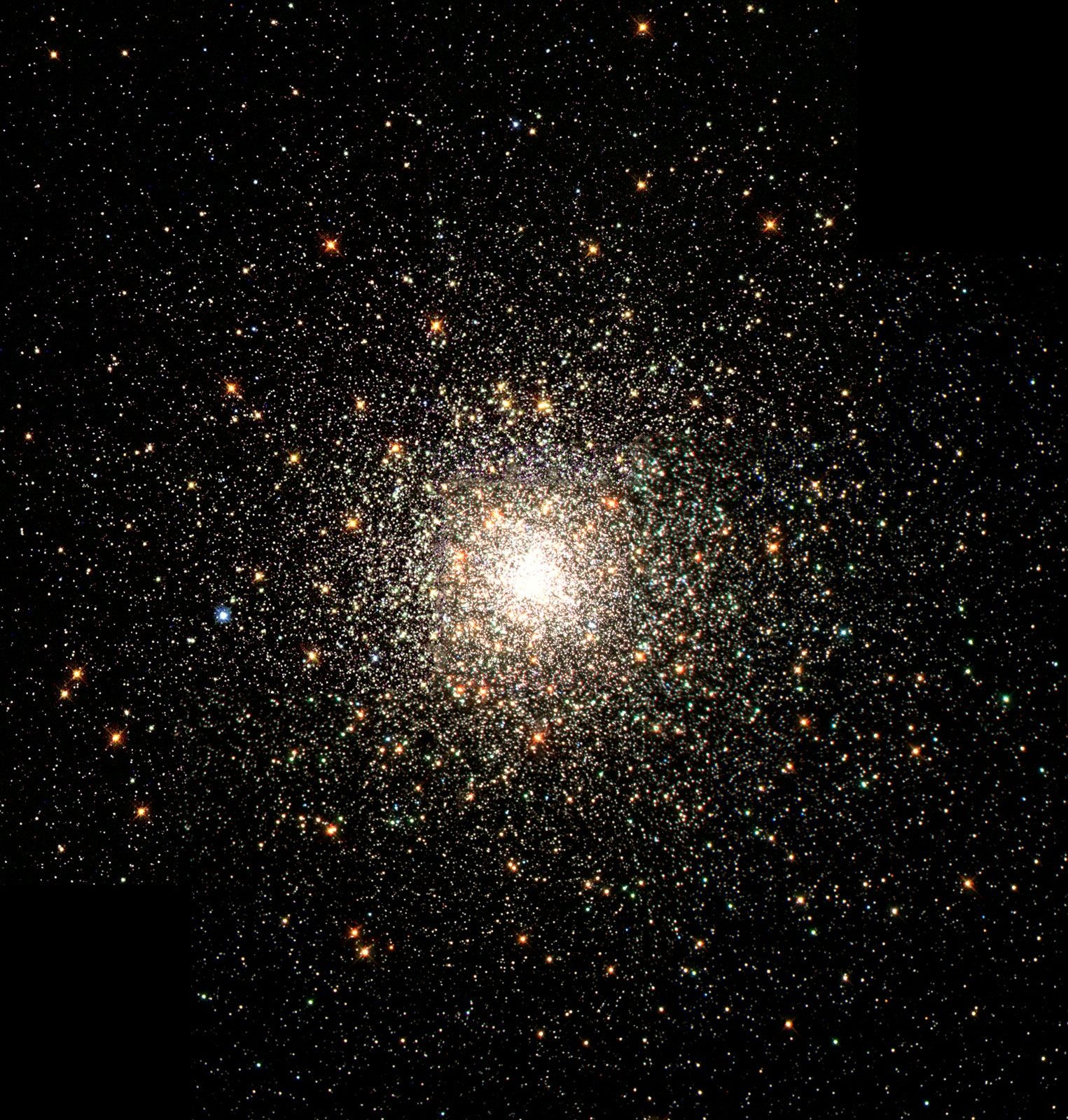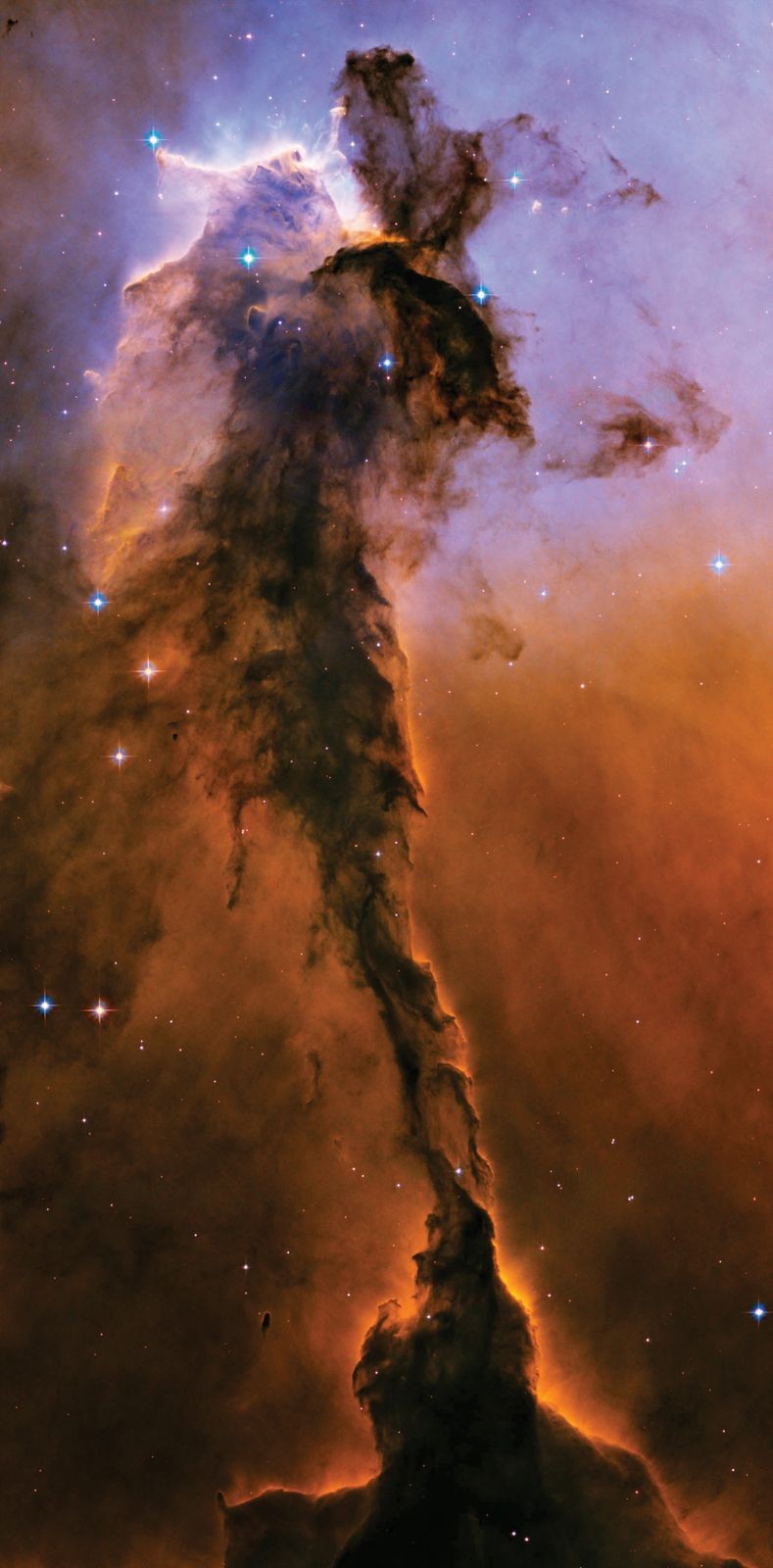Are you curious about the vastness of space and the celestial bodies within it? At WHAT.EDU.VN, we understand your quest for knowledge and offer a platform to quench your thirst for answers. What are galaxies and the Milky Way? A galaxy is a massive, gravitationally bound system consisting of stars, stellar remnants, an interstellar medium of gas and dust, and dark matter, while the Milky Way is the specific spiral galaxy that contains our Solar System.
Let’s delve into the fascinating world of galaxies and the Milky Way, uncovering their secrets and understanding their significance. Explore the components of galaxies, their types, and how our very own Milky Way fits into the grand scheme of the universe and find out the mysteries of space, cosmic wonders, and celestial bodies.
1. What Exactly Is a Galaxy?
A galaxy is a massive system in space. It’s bound together by gravity and contains stars, stellar remnants, an interstellar medium of gas and dust, and a significant amount of dark matter. Galaxies vary greatly in size, shape, and composition, offering a stunning diversity in the cosmos.
To further elaborate, here’s a breakdown of what makes up a galaxy:
- Stars: The fundamental building blocks of galaxies, ranging from small red dwarfs to massive blue giants.
- Stellar Remnants: The leftovers of dead stars, such as white dwarfs, neutron stars, and black holes.
- Interstellar Medium: The gas and dust that fills the space between stars, providing the raw material for new star formation.
- Dark Matter: A mysterious substance that makes up a large portion of a galaxy’s mass, influencing its structure and rotation.
1.1. What Are the Different Types of Galaxies?
Galaxies are classified into several types based on their shape and structure:
- Spiral Galaxies: These galaxies have a central bulge surrounded by a flat, rotating disk with spiral arms. Our Milky Way is a spiral galaxy.
- Elliptical Galaxies: These galaxies are characterized by their smooth, elliptical shape and lack of distinct features.
- Lenticular Galaxies: These galaxies are a hybrid between spiral and elliptical galaxies, with a disk but no prominent spiral arms.
- Irregular Galaxies: These galaxies have no defined shape or structure and are often the result of galactic collisions or interactions.
1.2. How Big Can a Galaxy Get?
Galaxies come in a wide range of sizes, from dwarf galaxies containing only a few million stars to giant galaxies with trillions of stars. The largest known galaxy, IC 1101, spans over 6 million light-years in diameter.
2. What Is the Milky Way?
The Milky Way is the galaxy that contains our Solar System. It’s a barred spiral galaxy, meaning it has a central bar-shaped structure composed of stars. The Milky Way is estimated to contain between 100 and 400 billion stars.
2.1. Why Is It Called the Milky Way?
The name “Milky Way” comes from the galaxy’s appearance as a hazy band of light across the night sky. In Greek mythology, this band was believed to be milk spilled by the goddess Hera.
2.2. What Are the Main Components of the Milky Way?
The Milky Way consists of several main components:
- The Galactic Disk: A flat, rotating disk containing most of the galaxy’s stars, gas, and dust.
- The Galactic Bulge: A central, spherical region containing a high concentration of stars, including older stars and a supermassive black hole at the very center.
- The Galactic Halo: A sparse, spherical region surrounding the disk and bulge, containing globular clusters, dark matter, and some scattered stars.
2.3. Where Is Our Solar System Located in the Milky Way?
Our Solar System is located in the Orion Arm, a minor spiral arm of the Milky Way, about two-thirds of the way out from the galactic center.
3. Star Clusters and Stellar Associations in the Galaxy
Within galaxies like the Milky Way, stars often congregate in groups called star clusters and stellar associations. These groupings provide valuable insights into star formation and galactic evolution.
3.1. What Are Star Clusters?
Star clusters are groups of stars that are gravitationally bound together. They’re born from the same molecular cloud and share a similar age and composition. There are two main types of star clusters:
- Globular Clusters: These are dense, spherical clusters containing hundreds of thousands to millions of old stars. They’re typically found in the galactic halo and are among the oldest structures in the galaxy.
- Open Clusters: These are looser, less concentrated clusters containing tens to thousands of younger stars. They’re found in the galactic disk and are often associated with star-forming regions.
3.2. What Are Stellar Associations?
Stellar associations are even looser groupings of young stars than open clusters. They’re not as gravitationally bound and tend to disperse over time. Stellar associations are typically found in regions of active star formation.
3.3. What Are Moving Groups?
Moving groups are organizations of stars that share common measurable motions but may not form a noticeable cluster. These groups are identified by searching for stars with similar velocities and directions of movement.
4. Nebulae: The Galaxy’s Luminous Clouds
Nebulae are vast clouds of gas and dust in interstellar space. They are often regions of star formation or the remnants of dead stars.
4.1. What Are Emission Nebulae?
Emission nebulae are clouds of gas that have been ionized by the ultraviolet radiation from nearby hot stars. The ionized gas emits light, creating a colorful and luminous display. These nebulae are also referred to as H II regions.
4.2. What Are Planetary Nebulae?
Planetary nebulae are formed at the end of a star’s life when it sheds its outer layers of gas. The ejected gas forms a glowing shell around the dying star.
4.3. What Are Supernova Remnants?
Supernova remnants are the expanding clouds of gas and dust that result from a supernova explosion. These remnants are rich in heavy elements and play a crucial role in enriching the interstellar medium.
5. Dust Clouds: Obscuring the Galaxy
Dust clouds are regions of interstellar space that contain a high concentration of dust particles. These clouds can obscure our view of distant objects and affect the color of starlight.
5.1. How Do Dust Clouds Affect Our View of the Galaxy?
Dust clouds absorb and scatter light, making it difficult to see objects behind them. This obscuration is particularly pronounced in the plane of the Milky Way, where dust is concentrated.
5.2. What Are Bok Globules?
Bok globules are small, dense dust clouds that are often associated with star formation. They are named after astronomer Bart J. Bok, who first studied them.
5.3. How Do Astronomers Study Dust Clouds?
Astronomers use various techniques to study dust clouds, including:
- Infrared Observations: Infrared light can penetrate dust more easily than visible light, allowing astronomers to study the composition and structure of dust clouds.
- Molecular Line Observations: Dust clouds contain molecules that emit radio waves, which can be used to identify and map the distribution of these molecules.
6. The Interstellar Medium: The Galaxy’s Filling
The interstellar medium (ISM) is the matter that exists in the space between stars within a galaxy. It consists of gas, dust, and cosmic rays.
6.1. What Is the Composition of the Interstellar Medium?
The ISM is primarily composed of hydrogen and helium, with trace amounts of heavier elements. It also contains dust grains made of silicates, carbon, and ice.
6.2. How Does the Interstellar Medium Affect Starlight?
The ISM affects starlight in several ways:
- Extinction: Dust in the ISM absorbs and scatters light, causing stars to appear fainter.
- Reddening: Dust scatters blue light more effectively than red light, causing stars to appear redder than they actually are.
- Polarization: Dust grains can align with magnetic fields, causing starlight to become polarized.
6.3. How Do Astronomers Study the Interstellar Medium?
Astronomers use various techniques to study the ISM, including:
- Radio Observations: Radio waves can penetrate the ISM, allowing astronomers to study the distribution and properties of neutral hydrogen gas.
- Absorption Line Observations: Atoms and ions in the ISM absorb light at specific wavelengths, creating absorption lines in the spectra of distant stars.
7. Companion Galaxies: The Milky Way’s Entourage
The Milky Way is not alone in space. It has a number of smaller galaxies orbiting it, known as companion galaxies.
7.1. What Are the Magellanic Clouds?
The Magellanic Clouds are two irregular galaxies, the Large Magellanic Cloud (LMC) and the Small Magellanic Cloud (SMC), that are visible from the Southern Hemisphere. They are among the closest galaxies to the Milky Way.
7.2. What Are Dwarf Galaxies?
Dwarf galaxies are small, faint galaxies that contain only a few million to a few billion stars. The Milky Way has a number of dwarf galaxies orbiting it, including the Sagittarius Dwarf Spheroidal Galaxy and the Carina Dwarf Spheroidal Galaxy.
7.3. How Do Companion Galaxies Interact with the Milky Way?
Companion galaxies can interact with the Milky Way through gravitational forces. These interactions can distort the shape of the companion galaxies and even lead to their eventual merger with the Milky Way.
8. Key Differences Between Galaxies and the Milky Way
Understanding the differences between a galaxy and the Milky Way is crucial to grasping our place in the cosmos. Here’s a table summarizing the key distinctions:
| Feature | Galaxy | Milky Way |
|---|---|---|
| Definition | A massive system of stars, gas, dust, and dark matter bound together by gravity. | The specific barred spiral galaxy that contains our Solar System. |
| Type | Can be spiral, elliptical, lenticular, or irregular. | Barred spiral. |
| Size | Varies greatly, from dwarf galaxies to giant galaxies. | Approximately 100,000 to 180,000 light-years in diameter. |
| Star Count | Varies from a few million to trillions. | Estimated to contain between 100 and 400 billion stars. |
| Location | Found throughout the universe. | Our home galaxy, located in the Local Group of galaxies. |
| Notable Examples | Andromeda Galaxy (M31), Triangulum Galaxy (M33), Sombrero Galaxy (M104). | The galaxy we live in. |
| Components | Stars, stellar remnants, interstellar medium (gas and dust), dark matter. | Galactic disk, galactic bulge, galactic halo, spiral arms, supermassive black hole (Sagittarius A*). |
| Motion | Galaxies can rotate, orbit each other in groups or clusters, and move through space as part of larger structures like superclusters. | Rotates, with the Sun orbiting the galactic center at approximately 220 km/s. |


9. Galaxy vs. Universe: Understanding the Scale
It’s easy to get lost in the vastness of space, so let’s clarify the relationship between galaxies and the universe:
- The Universe: Encompasses everything that exists, including all matter, energy, space, and time. It contains billions of galaxies, each with its own collection of stars, planets, and other celestial objects.
- Galaxies: Are massive, gravitationally bound systems within the universe. They are like islands of stars in the vast cosmic ocean.
Think of it this way: the universe is like a vast ocean, and galaxies are like islands scattered throughout that ocean. Each galaxy is a self-contained system with its own unique characteristics.
10. Frequently Asked Questions About Galaxies and the Milky Way
Let’s address some common questions about galaxies and the Milky Way:
10.1. How Many Galaxies Are There in the Universe?
Estimates vary, but scientists believe there are hundreds of billions to trillions of galaxies in the observable universe.
10.2. Can Galaxies Collide?
Yes, galaxies can and do collide. In fact, the Milky Way is on a collision course with the Andromeda Galaxy, which is expected to occur in about 4.5 billion years.
10.3. What Is at the Center of the Milky Way?
At the center of the Milky Way lies a supermassive black hole called Sagittarius A*. This black hole has a mass of about 4 million times that of the Sun.
10.4. How Far Away Is the Nearest Galaxy to the Milky Way?
The nearest major galaxy to the Milky Way is the Andromeda Galaxy, which is about 2.5 million light-years away.
10.5. What Is the Shape of the Milky Way?
The Milky Way is a barred spiral galaxy, which means it has a central bar-shaped structure composed of stars.
10.6. How Do Galaxies Form?
Galaxies are believed to have formed from the gravitational collapse of density fluctuations in the early universe.
10.7. What Is Dark Matter’s Role in Galaxy Formation?
Dark matter plays a crucial role in galaxy formation by providing the gravitational scaffolding that allows galaxies to form and hold together.
10.8. How Do Stars Form in Galaxies?
Stars form in galaxies from the collapse of dense clouds of gas and dust in the interstellar medium.
10.9. How Do Galaxies Evolve?
Galaxies evolve through a variety of processes, including star formation, mergers with other galaxies, and interactions with the intergalactic medium.
10.10. What Is the Future of the Milky Way?
The future of the Milky Way is intertwined with its inevitable collision with the Andromeda Galaxy. This collision will likely result in the formation of a new, larger galaxy.
Your Cosmic Journey Starts Here
Understanding galaxies and the Milky Way is a journey that expands our minds and connects us to the vastness of the universe. At WHAT.EDU.VN, we’re dedicated to providing you with the knowledge and resources you need to explore the wonders of space.
Do you have more questions about galaxies, the Milky Way, or any other topic? Don’t hesitate to reach out to us at WHAT.EDU.VN. Our team of experts is here to provide you with the answers you seek, completely free of charge.
Contact Us:
- Address: 888 Question City Plaza, Seattle, WA 98101, United States
- WhatsApp: +1 (206) 555-7890
- Website: WHAT.EDU.VN
Let what.edu.vn be your guide as you explore the cosmos and unlock the secrets of the universe.
